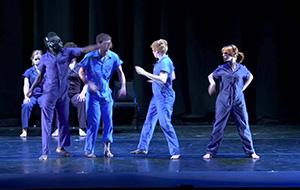 The safety of children in the dance student is something which is both a right and a legal requirement, with dance teachers obliged to uphold their policies on protecting the students who attend their studios for lessons.
The safety of children in the dance student is something which is both a right and a legal requirement, with dance teachers obliged to uphold their policies on protecting the students who attend their studios for lessons.
On a basic level, studios must be properly equipped for dance, with adequate flooring and enough space for the students who attend. This is in addition to supporting the emotional health and wellbeing of students, engaging with and enjoying an environment that is nurturing and supportive. This provides the joy of dance in addition to the physical safety aspect of correct anatomical instruction and injury prevention.
On a more complex level, dance students must also be safe from any form of abuse, be it when they are involved in dance, sport or any other associated activities. Gone are the days when dance students were manhandled into the correct alignment. Of course, dance is physical and touch is therefore an essential component of teaching, however parents, guardians and even students may be now hyper-aware of this, and feel uncomfortable about human contact and touch. Many teachers ask permission to use touch to aid in their teaching or corrections, in order to respect the student.
To further counter the limits of safety awareness in the twenty-first century, many dance teachers now operate with an ‘open door’ policy, in which parents are invited to view and engage with their child’s class to create a transparent and welcoming environment. Psychological safety is therefore just as important as physical safety, in that the student trusts they are safe during dance lessons. Many dance schools focus on building self-esteem and the emotional wellbeing of students in their duty of care, encouraging the students to communicate with and respect each other, and the teacher also.
The issue of child safety is one that is ever-present. For dance teachers the world over, developing a comprehensive safety policy is essential to protect both students and teachers.
